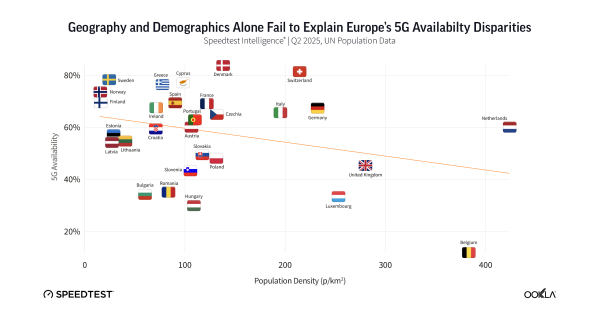Overview of remote diagnosis of coronavirus
China Telecom, ZTE and West China Hospital of Sichuan University, conducted remote diagnosis of the coronavirus via 5G based remote video consultation.
According to the on-site situation, ZTE has employed its CPE equipment to commission 5G services by means of outdoor 5G signals while constructing indoor coverage points.
On January 25, 5G indoor base stations were built and interconnected, and the conference room for remote diagnosis and treatment in West China Hospital was first connected to the remote diagnosis and treatment system.
On January 26, ZTE completed the rapid construction, optimization, speed test, and commissioning of the 5G indoor distribution system at another core point of the remote diagnosis and treatment system.
After the 5G network was commissioned, Sichuan health and health commission, West China Hospital, and Chengdu Public Health Clinic Center conducted remote video consultation.
In accordance with the work arrangement of the Sichuan Health and Health Commission, the 5G remote consultation system will take West China Hospital of Sichuan University as the central node, and be the first batch to access 27 hospitals that have accepted and treated patients.
In the next step, ZTE will build China’s first new 5G remote diagnosis coronavirus infection system covering three levels: Sichuan province, city, and county, to provide a “one network” for remote diagnosis in front-line hospitals that help Wuhan.
In the future, ZTE will carry out video consultation with the Wuhan front-end medical rescue team through the 5G network, so that critical patients in Wuhan can also enjoy expert diagnosis and treatment services in the West China Hospital.
RELATED: How 5G is transforming healthcare industry?
China Telecom – communication service provider for 5G connectivity
China Telecom provided the 5G connectivity for remote diagonsis of coronavirus
About – China Telecommunications Corporation (“China Telecom”), one of the world’s largest providers of integrated telecommunication services, continuously strives to enhance its capabilities in managing global operation to keep pace with changing times. In 2000, China Telecom established its first overseas office as it sought to grow its international business. Since then, China Telecom has expanded its international footprint rapidly with the establishment of branches and representative offices in Asia Pacific, Europe, Africa and Middle East. In order to better serve the demands of integrated international telecommunication services, whilst enhancing its global service quality and accelerating overseas business expansion, China Telecom integrated its international business and human resources to establish China Telecom Global Limited (“CTG”) in 2012, which is headquartered in Hong Kong.
Today, China Telecom has branches and affiliates in 42 countries and regions, as well as 200 overseas PoPs, and more than 55.4T in international connectivity bandwidth and intercontinental capacity. By tapping into its network resources of 41 submarine cables (China Telecom was involved in the construction of more than 10 of those cables) and leveraging direct connection to more than 10 neighbouring countries and regions via terrestrial cables, China Telecom has forged its global service with vast network capacity.
Its services include internet direct access, internet transit, data services, broadband, unified communications, internet data centre, cloud computing, ICT services, fixed and mobile voice and value-added services, professional services, industry solutions, telecom operation consultancy and service outsourcing.
ZTE – network solution partner for enabling remote diagonsis of coronavirus
ZTE has employed its CPE equipment to commission 5G services by means of outdoor 5G signals and building/connecting 5G indoor base stations.
About – ZTE Corporation is a global leader in telecommunications and information technology. Founded in 1985 and listed on both the Hong Kong and Shenzhen Stock Exchanges, the company has been committed to providing integrated end-to-end innovations to deliver excellence and value to consumers, carriers, businesses and government and enterprise network customers from over 160 countries around the world to enable increased connectivity and productivity.
ZTE has complete end-to-end product lines and integrated solutions in the telecommunications industry. By means of all series of wireless, wireline, services, devices and professional telecommunications services, the company is capable of flexibly satisfying the diversified requirements and pursuit for rapid innovations of global operators and government and enterprise network customers.
ZTE believes in technology innovation as a core value of the company, investing more than 10% of annual revenue in R&D. The company has established state-of-the-art global R&D centres in USA, Sweden, China and so forth. ZTE has filed applications for more than 74,000 patents, with over 34,000 granted. Since 2010, ZTE has been ranked among the world’s Top-5 for patent applications under the Patent Cooperation Treaty (PCT) each year, according to the World Intellectual Property Organization. As a major contributor and participant in the research of global 5G technologies and standards, ZTE has declared 2,561 families of 5G Standard-Essential Patents(SEP) to the European Telecommunications Standards Institute (ETSI), thereby being included among global top 3, according to IPlytics’ report on February 2020.
West China Hospital – Healthcare partner for remote diagonsis of coronavirus
About – West China School of Medicine/West China Hospital of Sichuan University (WCSM/WCH), also as known as Huaxi Hospital or The International Hospital of Sichuan Province, is a prestigious and well-known medical center located in Chengdu city, Sichuan Province.
Use case showcase location and timeline
Remote diagonsis of coronavirus was conducted in Jan 2020 at West China Hospital and Chengdu Public Health Clinic Center of Sichuan University, in China.
Benefits of remote diagnosis of coronavirus
Remote dignosis of the coronavirus using 5G to connect doctors with patients
- Can mitigate the risks associated with treating deadly diseases without sacrificing the speed and quality of care
- High-quality, low-latency video enabled by 5G networks allows doctors to get a clear picture of a patient without placing them in harm’s way.
- Patients in rural locations with limited resources can be treated by specialists, providing them access to quality care despite geographic restrictions.
- Makes it easier for a limited number of expert doctors to treat a large number of patients in diverse locations with minimal travel.
The next-gen network’s high bandwidth supports a large number of connections, enabling more patients to seek help simultaneously. The 5G network ZTE is building for the Lei Shen Shan Hospital in Wuhan can allow an estimated 25,000 people to communicate with each other at the same time.

































